Even though it seems that most moms have to put extra effort into producing enough milk for their newborns, there is also a significantly big group of those who wonder how to decrease milk supply.
Maybe you’ve decided it’s time to wean, maybe your oversupply is followed by frequent let-downs or your baby is having a hard time nursing due to your milk’s fast flow.
Whatever the case, the bottom line is you’ve concluded that you’re producing too much breast milk.
So, now you’re wondering what to do about it and how to decrease milk supply. Well, as always, I’m here to assist.
Here are 15 proven techniques to help you out with your overabundant milk supply.
DIY Methods To Decrease Milk Supply
While asking your International Board Certified Lactation Consultant (IBCLC) for help regarding milk production is the obvious route to take, there are some things you can do yourself.
After all, who can know your baby’s needs and your own body better than you?
Here are some do-it-yourself methods for decreasing your milk supply.
The best part is that you literally don’t need any special equipment for any of these techniques and you can perform each one of them in the comfort of your own home. (The only thing you might need is an electric breast pump, but you probably already have that.)
Whatever you do, don’t forget to follow the rhythm of both your and your baby’s bodies.
1. Block feed

Before we get into this technique, it’s wise to check with your lactation consultant that you do in fact have an oversupply. It may seem silly, but it’s actually rather common for moms to confuse oversupply with an overactive letdown.
If your lactation specialist gives the go ahead to block feed, then read on!
Simply put, when you engage in block feeding, you nurse your baby from one breast at a time. Basically, you breastfeed from one breast only in a block of three or four hours.
Don’t worry, block feeding allows you to satisfy your baby’s needs; you still produce enough milk and your baby is properly breastfed. During this time, you can feed your little one whenever he wants. However, you can’t switch between breasts.
This is one of the most effective methods for moms who are looking to wean or for ways to decrease their breast milk supply.
It’s actually pretty logical how the entire process works. One of your breasts remains full of milk during a certain block of time.
Therefore, your body gets the signal that only a small amount of milk is needed.
This happens due to your body’s system called the feedback inhibitor of lactation (FIL).
If it weren’t for this inhibitor of lactation, your body would never know when it’s safe to stop producing milk and every mother would end up with an endless milk supply.
Therefore, when you “activate” your FIL by block feeding, your milk production slows down.
For starters, try this method for one or two weeks. Use blocks of three hours and monitor your progress along the way.
If nothing significant happens in this period of time, increase the time of your blocks to four hours and so on.
However, keep in mind that the longest amount of time in between alternating breasts is 12 hours.
2. Drain your breasts
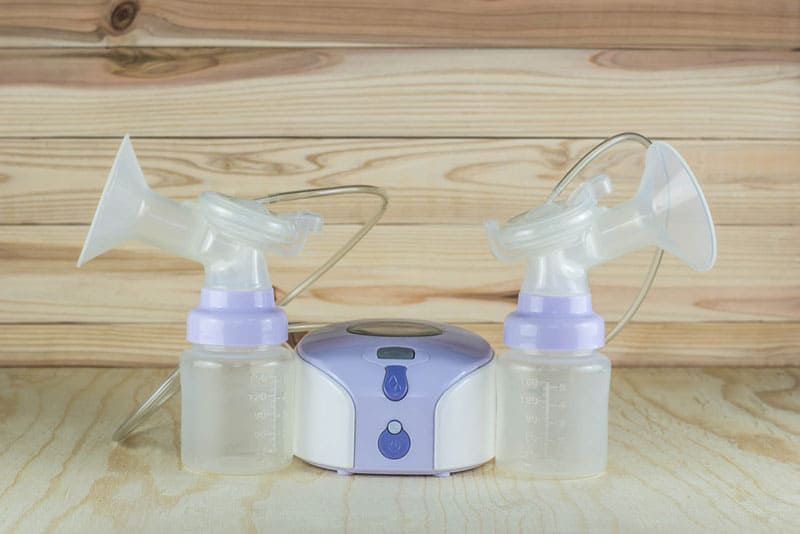
When you’re trying to figure out how to decrease milk supply, one of the ways to do it is to drain your breast to the maximum every day, as soon as you wake up. You probably won’t be able to accomplish this successfully if you hand express only.
In that case, the best solution is to get yourself an electric breast pump. This product will help you drain your breasts completely without much trouble and with minimum effort.
The next step is feeding your child immediately after draining both of the breasts. Don’t worry, there will be plenty of milk left for your baby to be properly fed.
Yes, it’s true that your milk flow will be slower at this point. However, just be patient, persistent, and don’t let this scare you.
Besides, remember that the milk of higher fat comes at the end of the milk feed.
Therefore, your baby will get even more nutrition and everything else he needs.
After you’re done with the full drainage, you’re ready to start the block feeding method explained above in detail.
Feed your baby within the determined time block from one breast (3 hours in the beginning).
After 24 hours, repeat the process of full drainage, expressing your milk all over again with the help of an electric breast pump.
The main problem with this technique is that changes don’t happen overnight, as much as you might like them to come. Instead, you’ll have to repeat this method for at least a month before you see any significant progress.
3. Reduce the pressure

The natural outcome of each one of these processes is that you’ll start feeling an uncomfortable sensation in your breasts. After all, you’re trying to decrease your supply but you can’t expect that milk to magically disappear from your body overnight.
In fact, many women even feel pain in their breasts during this period of time. Worry not – it’s nothing dangerous but completely normal.
If this is something you can relate to, nobody will advise you to put up with the pain or to continue feeling uncomfortable any longer. Instead, what you should do is relieve the pressure from your breasts.
So the easiest way to do it would be to hand express, right? However, you’re trying to avoid doing this because it would have a counterproductive effect.
Whenever you express yourself or breastfeed your baby, you’re sending feedback signals to your body. It interprets that you need more milk to be produced and that is exactly what your body does: It gives you an increased supply of milk.
Sounds like a tricky situation, I am aware of that. Nevertheless, it can be solved.
What you need to do is to express the smallest possible amount of milk.
This way, your body won’t receive too strong of a signal, but at the same time, you will be relieved at least a little bit.
4. Avoid large amounts of galactogogues

When you’re producing little milk and struggling with low milk supply, you eat large amounts of certain lactogenic foods (also called galactogogues) that can help stimulate lactation.
Well, now you have to do completely the opposite: You need to avoid them.
For example, oats have a high amount of dietary beta-glucan, which is something you don’t need right now. The same goes for brown rice, barley, and other whole grains.
Other foods that increase your supply are raw papaya, garlic, coriander seeds, asparagus, fenugreek seeds, fennel seeds, cumin seeds, sesame seeds, apricot, salmon, sweet potatoes, almond, chickpea, cow milk, tofu, watermelon, green tea, grapefruit, curry leaves, carrots, basil, mustard greens, spinach, kale, and so on.
5. Change to the laid-back breastfeeding position
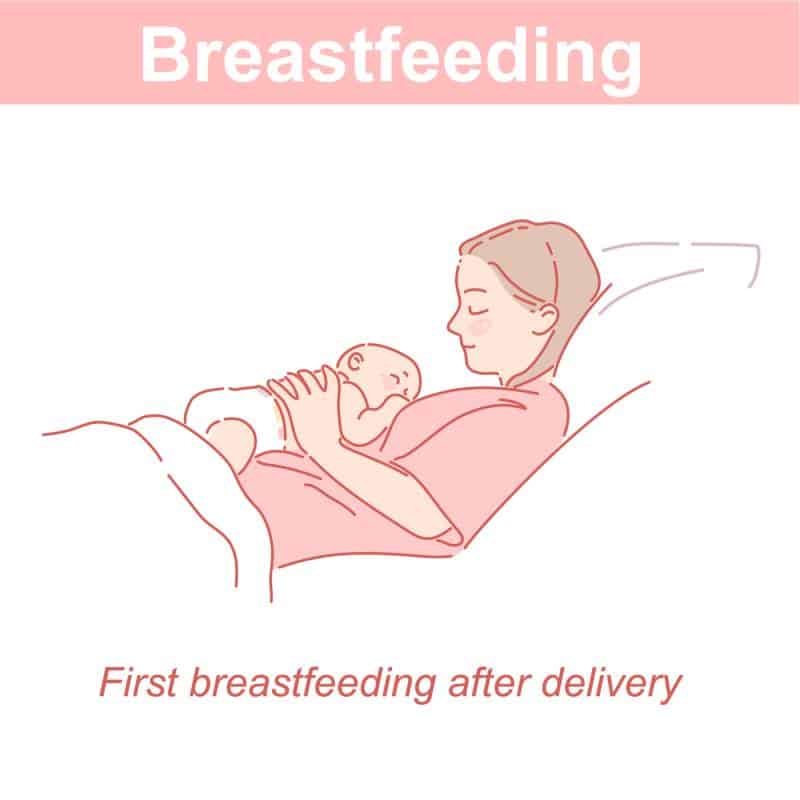
If you’re wondering how to decrease milk supply, remember that your child should have more control while nursing. This way, he’ll breastfeed at his own pace and be able to stop eating if too much milk is coming out.
The best way to give your baby more control is by changing your breastfeeding position. Try lying back. Keep your shoulders elevated by leaning back on a pillow or the sofa, and position your little one with his tummy on yours and his head at breast height.
6. Start pumping less milk
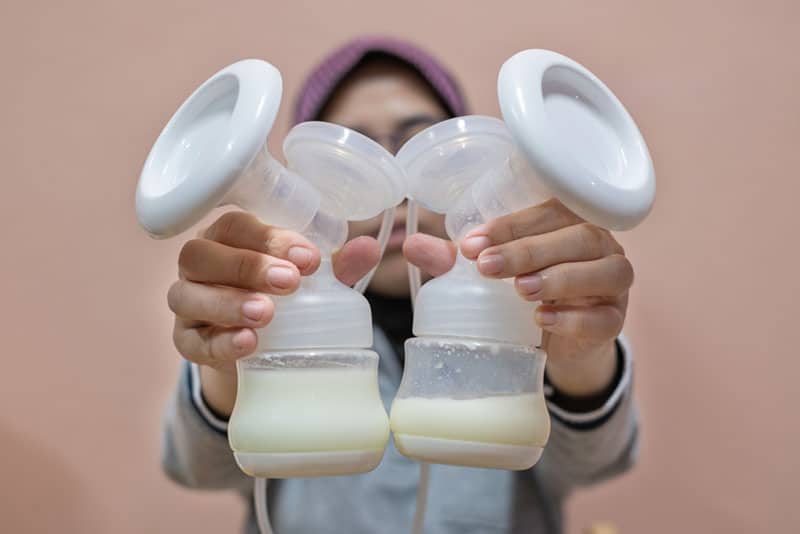
I bet this sounds overly simple, but it really is the truth. A great method to decrease your supply is to start pumping less and less milk.
However, you can’t just stop breastfeeding or expressing yourself overnight. Trust me, that may lead to numerous problems, such as clogged milk ducts and mastitis.
Instead, recognize this as a process that will take some effort and even more time. What you have to do is gradually drop your pumping schedule.
For starters, the best idea is to cut off one nursing session during the day. There are multiple approaches to this.
The “cold turkey” approach is probably the easiest one and it doesn’t require much thought.
Basically, you simply erase one of your sessions from your schedule.
The second approach includes doing something completely the opposite but expecting the same outcome.
Yes, you read it right.
Actually, you will be gradually bringing your pumping sessions together. Instead of deleting one of them, two will merge into one.
However, this can’t be done out of the blue either. Instead, you’ll decide on the sessions you want to bring together, then start shortening the amount of time between them.
Remember: your final goal is for these two sessions to meet halfway. Therefore, you have to move them both simultaneously.
Begin by changing your schedule by 15 minutes every day.
Let’s say that you have two pumping sessions at 12 pm and at 3 pm. The next day, these sessions’ timing will be 12.15 pm and 2.45 pm. The day after that, it will be 12.30 and 2.30. You see where I’m going with this. Don’t stop until they collide into one.
Another interesting and effective method of milk decrease involves reducing the pumping time.
It means that each one of your pumping sessions still has its own appointment.
However, you start spending less and less time pumping with every day that goes by. You continue doing so until you reach a few minutes per session or until you stop pumping completely.
The same strategy would apply by reducing the volume. In this case, you pump a smaller amount of milk each day.
Naturally, this also has to be done gradually and slowly since it’s the only way to get your desired results.
How To Decrease Milk Supply With Herbs
We live in a modern age. However, despite all of its benefits, sadly our era has made us forget our roots.
Among other things, it made us forget the power of nature. It’s about time we realize that Mother Nature offers us many remedies we probably have no clue about.
Well, I’m about to change that and show you little tricks on how some herbs can help you out with reducing your breast milk production.
There are no chemicals involved, so all of these products are 100% safe to use.
You might not be a big fan of herbal medicine nor believe in its efficacy, but it really can’t hurt to try the following methods out.
After all, none of them can harm you in any way so you have nothing to lose.
1. Cabbage

I am certain that you’re very well familiar with the fact that cabbage leaves are among the top remedies nature gives us for engorgement.
However, if you’re wondering how to decrease milk supply without getting mastitis, I’m sure you didn’t know that cabbage has other amazing benefits – that it can help you fight hyperlactation.
Besides, it’s not expensive and very easily accessible.
Cabbage leaves are great during the weaning process or in cases of overabundant milk supply.
And the best part is, you don’t have to worry about the side-effects, since it’s all completely natural.
You can chill the leaves before application or you can use it at room temperature. It’s just important that you wash the cabbage before applying it to your breasts.
Use it between feeding. Don’t leave it on for more than 20 minutes and don’t use it more than three times a day – 1 hour all together.
Stop with this practice as soon as you notice any progress. If not, you might exaggerate its benefits and lose too much of your milk.
On the other hand, during weaning, the process is of course different. You should keep the cabbage on your breasts until the leaves start to wither.
Right after that, it’s safe to change the leaves and put another one. Continue doing this until you feel some relief.
Cabbage allergies are quite unusual. However, a few women have reported getting a rash on their breasts from using the cabbage leaves too often. If this happens to you, it goes without saying that you should stop using it instantly.
2. Jasmine

When asked how to decrease milk supply, many women find it surprising to hear that numerous traditional medicines rely on jasmine’s flowers.
Even though this still hasn’t been scientifically proven, there are no negative side effects either, so, at the very least, it’s safe to use. I advise you to try it since many breastfeeding new moms claim it does miracles.
The usage is also quite simple. You get yourself some jasmine flowers or leaves, crush them and put on your breasts. If you’re worried about it falling off, just use breast pads or put it directly into your bra.
Another common way to use it is by drinking jasmine tea. Apart from providing calming effects for your psychological state, it will also ease your sore breasts and help with your oversupply.
The only thing you need to be careful about here is a possible allergy. On the other hand, if you’re certain that you’re not allergic to jasmine, you’re good to go and you can start using it right away.
3. Peppermint
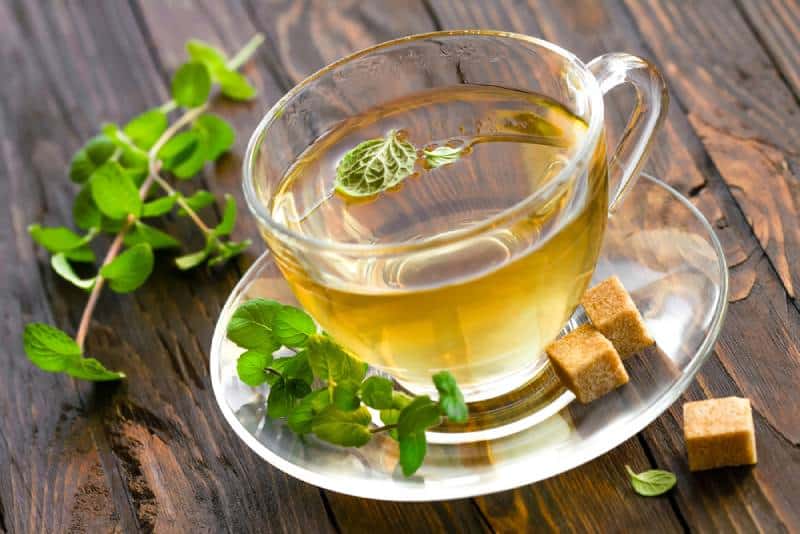
Peppermint is also one of the natural remedies for decreasing your supply. Actually, what impacts the milk flow is any plant of the genus mentha.
Peppermint contains high levels of a plant-based type of estrogen (phytoestrogen). You see, when you just start to breastfeed, your estrogen levels are exceptionally low, since this is a hormone that inhibits lactation.
Logically, when your body gets the mentha, which is full of plant estrogen, lactation will reduce as well.
Your first idea might be to get yourself an unlimited supply of peppermint candies.
After all, they’re affordable and you can buy it at literally every corner shop.
However, that is not such a good idea since you probably won’t get the desired result.
You see, these candies don’t contain a big amount of the actual plant’s components.
Instead, in most cases, they’re just full of flavor enhancers and aromas that are there to make you believe you’re eating an actual herb.
This is why it would be a better option to get yourself a real plant. Grow it yourself – it’s not so difficult.
If you plan on keeping it indoors, all you need to do is put the mint next to your window.
This plant requires a lot of natural sunlight and a lightly moistened soil.
That means that you don’t have to water it all the time, but be careful to not let the soil dry out either. Get yourself a pot with adequate drainage for best growing results.
Mentha’s roots spread quite vigorously, so it cannot be put too close to other plants because it can really take over everything once it starts growing. The best thing you can do is to keep it contained in a pot.
Once you’re able to start harvesting, you’re ready to make some herbal tea out of the mentha’s leaves to help you with your problems. Many moms swear by peppermint as a natural way to decrease milk supply, but if for some reason it doesn’t work for you, hey, at least you’ll always have fresh breath!
4. Chasteberry
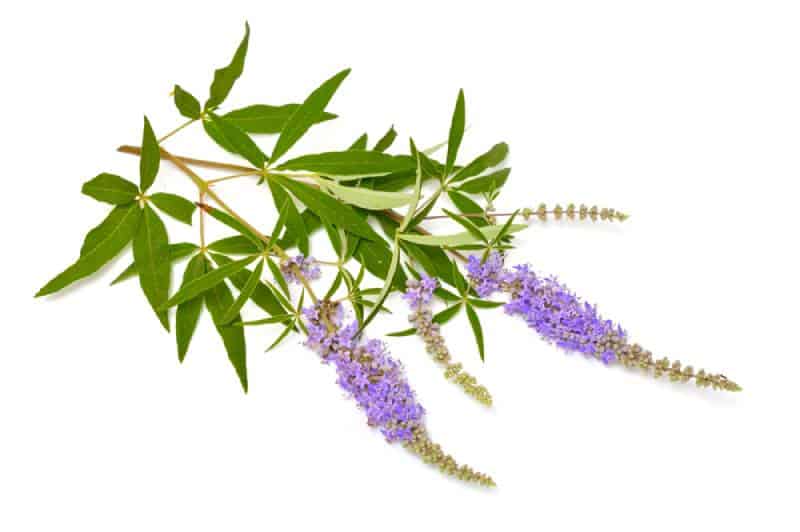
Chasteberry, also known as monk’s pepper, is the fruit of the chaste tree (Vitex agnus-castus). In the past, it has been used to reduce male libido.
Today is still used to treat infertility problems, premenstrual and menopausal symptoms, acne troubles, bladder issues, and enlarged prostate.
However, what you’re concerned about is the effect it has on your supply. First and foremost, new moms who have swollen breasts and are battling engorgement use chasteberry.
Chasteberry doesn’t prevent the milk flow directly. Nevertheless, it impacts the prolactin levels in your body, which consequently reduces the amount of milk you produce.
Unlike cabbage or jasmine, you don’t apply parts of the plant to your breasts, But instead take it orally.
It’s a relatively easy-to-grow Mediterranean-native shrub that belongs to the mint family, and can easily overtake your garden if not kept in check. Alternatively, you should be able to find it in supplement form at your nearby healthy food store.
5. Sage

If you’re wondering how to decrease your breast milk supply, another plant from the mint family that can help you with hyperlactation is sage. This herb is usually used in cooking, but it has many health benefits most people sadly know nothing about.
Everything you need from this plant is contained in its leaves, which are full of different antioxidants. You just need to dry the leaves and you’re good to go.
Sage tea, besides being completely calorie-free, is also an efficient way to solve your oversupply problem.
To prepare the tea, put ¼ tablespoon of this herb in boiling water.
Let it steep for a couple of minutes, remove the leaves, and enjoy. Now you have yourself a healthy tea you can drink three times a day.
Don’t expect miraculous results after one usage only. In fact, you need to drink it for 4 days at least to notice some change.
If you don’t like the taste of sage tea, it won’t lose any of its health benefits if you mix it with a bit of honey.
You could also use the leaves in the traditional culinary sense by incorporating it into your cooking.
Sage is mostly safe but you need to be extremely careful if you are pregnant.
It has been proven that this herb can bring about contractions, so it’s better not to use it if you’re expecting.
How To Decrease Milk Supply With Medication
Sometimes, when nothing else works, you simply have to turn to conventional medicine. Whether you like it or not, in most cases, that includes taking some drugs to help you with your condition.
Here is a list of remedies proven to be effective in lactation suppression. However, always remember to be careful with each one of them. Even though many of these are available without prescription, it is best to first consult a doctor to be sure it’s safe for you and your baby.
1. Birth control pills
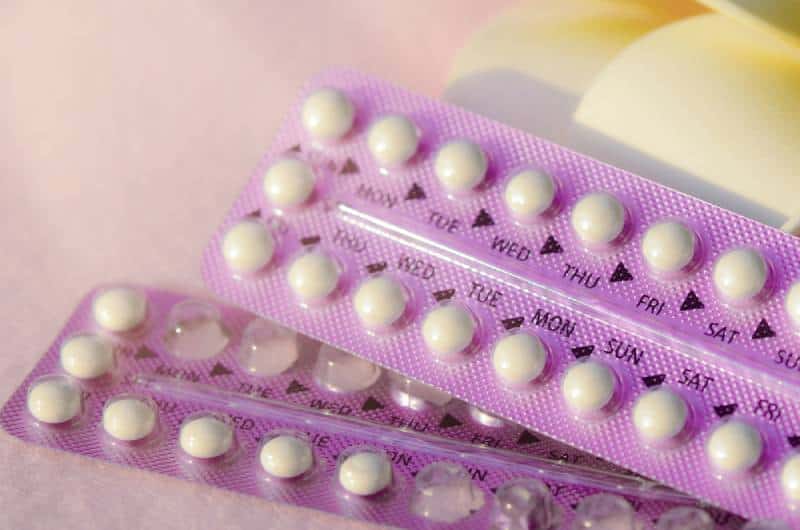
I’ve already talked to you about estrogen, its importance, and most significantly its impact on your breast milk supply. Well, most control pills contain high levels of estrogen and consequently will cause the reduction of your supply.
I’ll admit, it sounds pretty darn great, right? You’ll manage this oversupply you’re struggling against and at the same time be protected from any unwanted pregnancy.
One of the most important things here is to consult your health care provider before you start taking contraceptive pills. They’re not all the same (some don’t contain any estrogen, for instance) and your doctor will know exactly which pills are best suited to you.
2. Vitamin B

The dietary supplementation Pyridoxine, more commonly known as vitamin B6, is also your ally on this journey to decrease milk supply.
You shouldn’t have much trouble finding the vitamin. In fact, I am sure that literally every pharmacy has it in stock. And if you’re wanting to supplement naturally, try to include vitamin-B6-rich foods such as milk, spinach, liver, kidney, eggs, kale, eggs, and some fish and shellfish.
If you do decide to take the supplement, the largest dose that is considered safe is 200 mg a day. Continue for at least a week and you should start to see some progress.
3. Sudafed

Sudafed is essentially pseudoephedrine. In its primary use, this is a medicine for colds and hayfever.
What’s interesting is that it has also been shown to reduce your supply. You can take it up to four times a day, 60 mg a dose.
If you do decide to try this approach towards decreasing your supply, please contact your health care provider first and ask about some possible side effects and the duration of use.
4. Bromocriptine

Bromocriptine is another drug that doesn’t directly inhibit the milk production in your body. However, it does provoke a chain reaction that ends up giving you the desired result.
The effects of this drug are similar to those of dopamine. Among other things, dopamine dictates the production of prolactin.
Prolactin is a hormone that affects your breasts’ growth – that which directly causes the production of breast milk in the early weeks of your nursing. To put things simply, it is a hormone that controls lactation.
Bromocriptine blocks the production of prolactin. In turn, it blocks too much breast milk production or, at least, reduces it.
However, lately, bromocriptine has been banned for suppressing lactation and is no longer marketed as a lactation suppression drug. Allegedly, it has some negative long term consequences that are more serious and bigger than its benefits.
Nevertheless, if you plan on using it regardless of this, it’s crucial for you to first consult your doctor about it.
Conclusion
Don’t worry, you’re not alone in this. Many breastfeeding moms are also wondering how to decrease milk supply.
However, each one of them found their solution in one or more of the methods mentioned above. I’m sure that you won’t be an exception and that you will also get all the answers you need.
Whatever you do, please just relax as much as possible. Don’t burden yourself by expecting immediate results and always put the health of you and your baby first.
Good luck!
Like this post? Please share or pin it for later. You can also stay in the loop and follow us on Facebook, Instagram and Pinterest.

This post contains affiliate links. Please see our full disclosure for more info.

